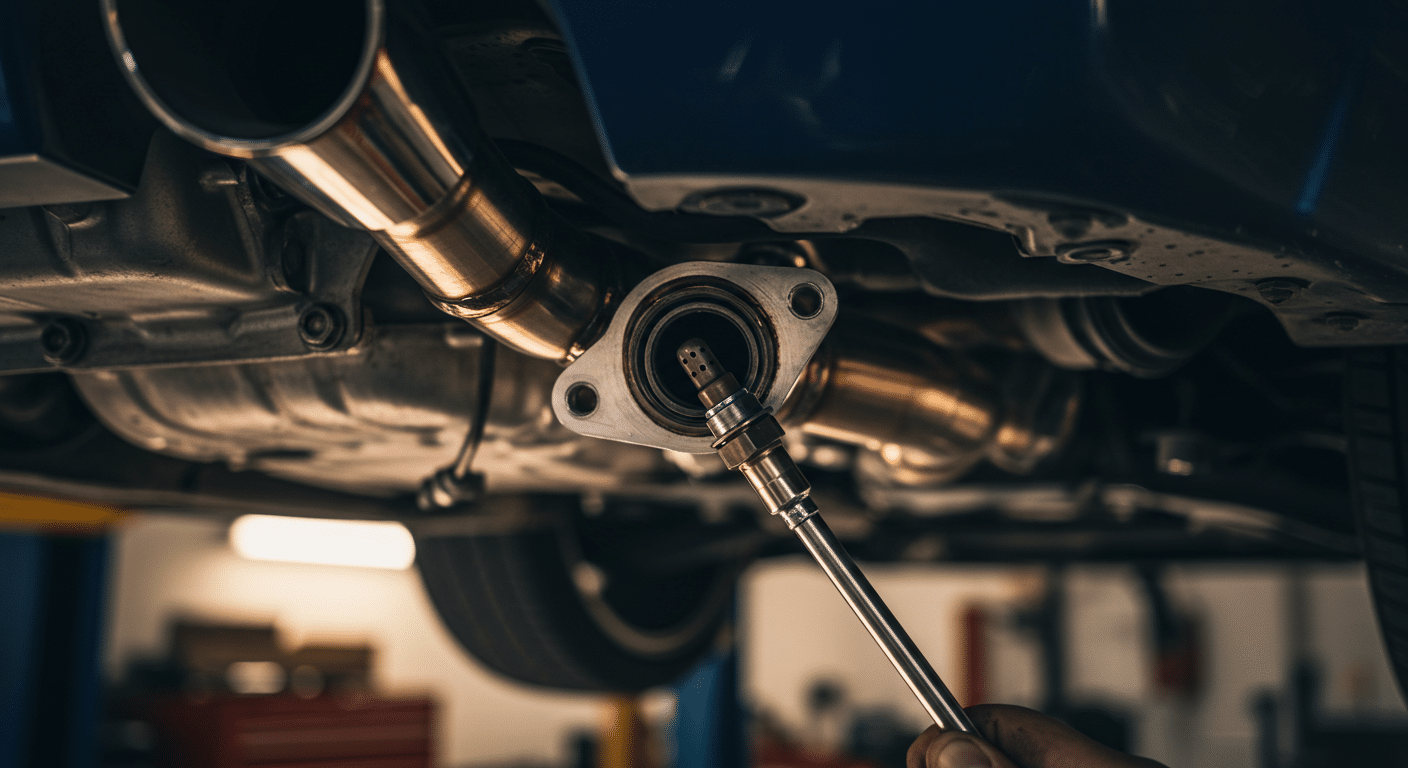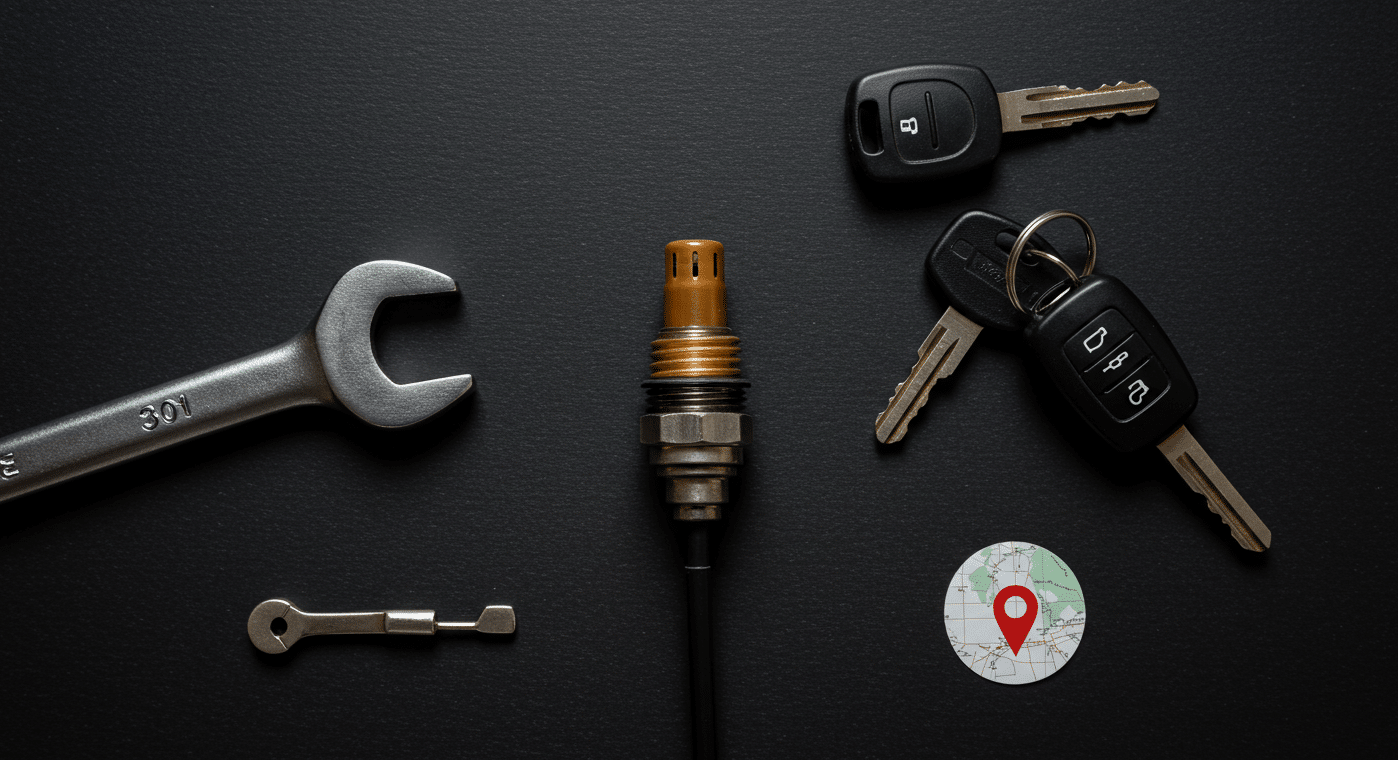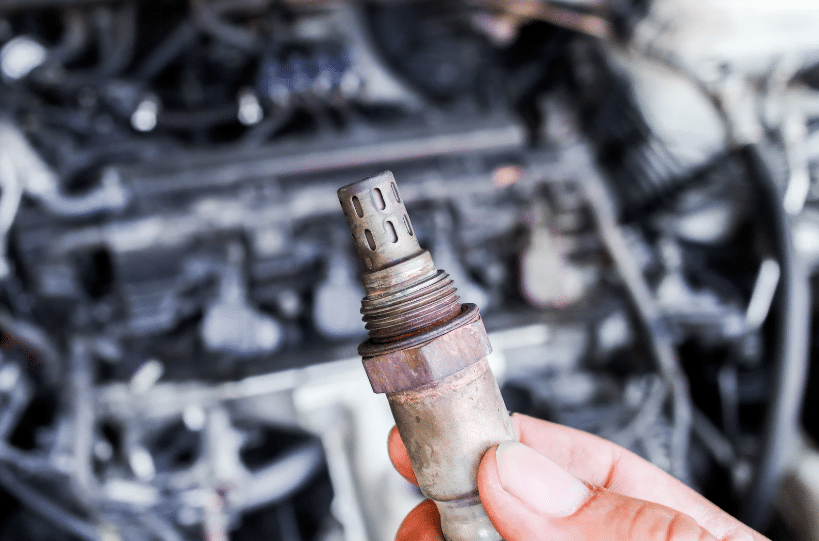O2 Sensor Replacement Cost: What You’ll Likely Pay in 2025

Sharing this:
Your check engine light just came on, and after a diagnostic scan, you've learned that your oxygen sensor needs replacement. If you're like most car owners, your first question is probably about cost. O2 sensor replacement is one of the most common automotive repairs, but the price can vary significantly depending on your vehicle type, sensor location, and where you choose to have the work done.
Oxygen sensors play a crucial role in your vehicle's emissions system and fuel efficiency. When they fail, you'll likely notice decreased gas mileage, rough idling, or that dreaded check engine light. Understanding the costs involved in O2 sensor replacement can help you budget appropriately and make informed decisions about your vehicle's maintenance.
In this comprehensive guide, we'll break down everything you need to know about O2 sensor replacement costs in 2025, including factors that influence pricing, what to expect during the repair process, and tips for saving money. Whether you're dealing with a single sensor failure or multiple sensor issues, this information will help you navigate the repair process with confidence.
Understanding O2 Sensor Function and Importance
Oxygen sensors monitor the amount of oxygen in your vehicle's exhaust gases, sending this information to your car's computer system. This data helps the engine control unit adjust the air-fuel mixture for optimal performance and emissions control. Most modern vehicles have between two and four oxygen sensors, depending on the engine configuration and emissions requirements.
When an O2 sensor fails, your vehicle's computer can't properly regulate the fuel mixture, leading to increased emissions and reduced fuel economy. In some cases, a faulty oxygen sensor can cause your vehicle to fail emissions testing, preventing you from renewing your registration. The sensor typically fails due to contamination from engine oil, coolant, or fuel additives, or simply from normal wear over time.
The location of your O2 sensors affects both their function and replacement cost. Pre-catalytic converter sensors (upstream) monitor exhaust gases before they enter the catalytic converter, while post-catalytic converter sensors (downstream) measure the converter's efficiency. Upstream sensors are generally more expensive to replace due to their location and the additional labor required for access.
Average O2 Sensor Replacement Costs in 2025
The total cost for O2 sensor replacement typically ranges from $200 to $500 per sensor, including parts and labor. However, this range can vary significantly based on several factors. For a standard passenger car, you can expect to pay between $250 and $350 for a single sensor replacement at most repair shops.
Parts costs alone range from $50 to $200 per sensor, depending on your vehicle's make, model, and year. Original Equipment Manufacturer (OEM) sensors cost more than aftermarket alternatives but often provide better longevity and performance. Labor costs typically add another $100 to $300 to the total bill, depending on sensor accessibility and your local market's labor rates.
Luxury vehicles and import models often require more expensive sensors and may have higher labor costs due to complexity. For example, a BMW or Mercedes-Benz might require sensors costing $150 to $300 each, while a Honda or Toyota might need sensors in the $60 to $120 range. Blue Ridge Automotive specializes in working with various vehicle makes and models, helping customers understand the specific requirements for their particular vehicle.
Factors That Influence Replacement Costs

Several key factors determine how much you'll pay for O2 sensor replacement. Vehicle age and mileage play significant roles, as older vehicles may require additional repairs or have sensors that are more difficult to access. High-mileage vehicles might also have corroded exhaust components that complicate the replacement process.
The sensor's location within your exhaust system dramatically affects labor costs. Upstream sensors located near the engine are often easier to access, while downstream sensors positioned after the catalytic converter may require lifting the vehicle and removing heat shields or other components. Some sensors are located in particularly tight spaces that require special tools or additional disassembly.
Your choice of replacement parts also impacts the total cost. While aftermarket sensors can save money upfront, OEM sensors typically last longer and may prevent future diagnostic issues. Some vehicles are particularly sensitive to sensor quality, making OEM parts worth the additional investment. Additionally, if multiple sensors need replacement simultaneously, some shops offer package pricing that can reduce the per-sensor cost.
Geographic location affects pricing as well. Urban areas with higher labor rates will typically cost more than rural locations. Dealerships generally charge premium prices compared to independent shops, but they guarantee OEM parts and have specialized knowledge of your vehicle's systems.
Signs Your O2 Sensor Needs Replacement
Recognizing the symptoms of a failing oxygen sensor can help you address the issue before it causes additional problems. The most obvious sign is an illuminated check engine light, but this generic warning doesn't specify the exact issue. A diagnostic scan is necessary to identify which sensor has failed and whether other related problems exist.
Poor fuel economy is often the first noticeable symptom of O2 sensor failure. When sensors can't properly monitor exhaust gases, your engine's computer defaults to a "rich" fuel mixture, increasing consumption by 10-20%. You might also notice rough idling, hesitation during acceleration, or black smoke from the exhaust pipe.
Failed emissions testing is another clear indicator of sensor problems. Most states require vehicles to pass emissions tests for registration renewal, and faulty O2 sensors will typically cause test failure. Additionally, you might smell sulfur or rotten eggs from the exhaust, indicating that the catalytic converter isn't functioning properly due to incorrect sensor readings.
Long-term driving with faulty O2 sensors can damage your catalytic converter, which is a much more expensive repair. Catalytic converter replacement can cost $1,000 to $3,000 or more, making prompt O2 sensor replacement a wise investment. Understanding these warning signs can help you avoid more costly repairs down the road, similar to how proper suspension maintenance prevents more expensive component failures.
DIY vs Professional Installation
Some mechanically inclined car owners consider replacing O2 sensors themselves to save money. The sensors themselves aren't particularly complex, but the installation process can be challenging depending on their location and your vehicle's design. Basic hand tools and a specialized O2 sensor socket are typically required for the job.
DIY replacement can save $100 to $300 in labor costs, but several factors should be considered before attempting this repair. Sensors are often installed in tight spaces where access is limited, and they may be seized in place due to heat and corrosion. Additionally, some vehicles require specific procedures for sensor initialization after installation.
Professional installation offers several advantages beyond convenience. Experienced technicians can quickly identify related problems, ensure proper sensor calibration, and provide warranties on their work. They also have specialized tools and lifts that make the job safer and more efficient. For most car owners, professional installation provides better value when considering time, tools, and potential complications.
One satisfied customer shared their experience: "I initially planned to replace my Subaru's O2 sensors myself but decided to have professionals handle it after researching the process. The technicians discovered that my exhaust manifold had hairline cracks that were affecting sensor performance. Getting everything fixed properly the first time saved me from ongoing problems and additional costs."
Cost-Saving Tips for O2 Sensor Replacement

Several strategies can help reduce your O2 sensor replacement costs without compromising quality. First, get quotes from multiple repair shops to compare pricing. Independent shops often charge less than dealerships while still providing quality service. However, ensure that any shop you choose has experience with your vehicle's make and has proper diagnostic equipment.
Consider timing your repair strategically. Some shops offer discounts during slower periods or may have seasonal promotions. If multiple sensors need replacement, having them all done simultaneously can sometimes reduce the per-sensor labor cost. Additionally, ask about warranty coverage for both parts and labor to protect your investment.
When selecting replacement sensors, balance cost and quality carefully. While OEM sensors cost more initially, they often last longer and perform better than cheap aftermarket alternatives. Mid-range aftermarket sensors from reputable manufacturers can provide good value, offering better performance than budget options without OEM pricing.
Preventive maintenance can also help extend O2 sensor life and avoid premature failure. Regular oil changes with high-quality oil reduce sensor contamination, while using quality fuel and avoiding fuel additives that aren't recommended by your vehicle manufacturer can prevent sensor damage. Just as proper transmission fluid maintenance protects expensive transmission components, good engine maintenance protects your emissions system.
When to Replace Multiple Sensors
Many vehicles have multiple oxygen sensors, and deciding whether to replace them all at once or individually requires careful consideration. If your vehicle has high mileage and one sensor has failed, others may be approaching the end of their useful life. Replacing multiple sensors simultaneously can reduce labor costs and prevent future diagnostic fees.
However, O2 sensors don't always fail at the same rate. Upstream sensors typically work harder and may fail sooner than downstream sensors. Vehicle history also matters - if sensors were replaced at different times, they'll likely fail at different intervals. A diagnostic scan can provide information about all sensor performance levels, helping guide replacement decisions.
Some repair shops offer package pricing for multiple sensor replacement, which can provide significant savings. For example, replacing four sensors individually might cost $1,200 to $1,600, while a package deal might reduce the total to $900 to $1,200. Consider your vehicle's age, mileage, and your long-term ownership plans when making this decision.
Frequently Asked Questions
How long do oxygen sensors typically last?
Most oxygen sensors last between 60,000 and 90,000 miles under normal driving conditions. However, factors like fuel quality, driving habits, and engine maintenance can significantly impact sensor lifespan. Vehicles used primarily for short trips or stop-and-go driving may experience shorter sensor life due to incomplete combustion cycles and increased contamination.
Can I drive with a bad O2 sensor?
While you can technically drive with a faulty oxygen sensor, it's not recommended for extended periods. Your vehicle will likely experience reduced fuel economy, increased emissions, and potential catalytic converter damage. Most states also require functioning emissions systems for vehicle registration, so repairs may be necessary for legal compliance.
Are aftermarket O2 sensors reliable?
Quality aftermarket sensors can provide reliable service, but performance varies significantly between manufacturers. Premium aftermarket brands often perform nearly as well as OEM sensors at lower cost, while budget options may have shorter lifespans or compatibility issues. Research specific brands and read reviews before choosing aftermarket alternatives.
How can I tell which O2 sensor is failing?
A diagnostic scan is necessary to identify the specific failing sensor, as each sensor has a unique code in your vehicle's computer system. Symptoms alone can't pinpoint which sensor has failed, especially in vehicles with multiple sensors. Professional diagnosis ensures the correct sensor is replaced and identifies any related issues.
Will a bad O2 sensor cause my car to fail inspection?
Yes, a failed oxygen sensor will typically cause your vehicle to fail emissions testing in states that require it. The check engine light alone is often an automatic failure, regardless of the underlying cause. Additionally, the sensor failure itself will likely result in emissions levels that exceed acceptable limits during testing.
Make the Right Decision for Your Vehicle Today!

O2 sensor replacement is a necessary maintenance item that shouldn't be delayed once problems are identified. While costs can vary significantly based on your vehicle and local market conditions, understanding the factors that influence pricing helps you make informed decisions. Remember that prompt replacement prevents more expensive repairs and maintains your vehicle's performance and efficiency.
When choosing a repair facility, prioritize experience and reputation over the lowest price. Quality installation with appropriate parts provides better long-term value than bargain repairs that may require repeat service. Consider your vehicle's age, condition, and your ownership plans when deciding between repair options.
For professional service and expert advice on your specific vehicle needs, Blue Ridge Automotive provides comprehensive diagnostic and repair services to keep your vehicle running efficiently and meeting emissions standards.
About Blue Ridge Automotive
Blue Ridge Automotive specializes in comprehensive automotive repair and maintenance services with years of experience serving drivers throughout the region. We provide expert diagnostic and repair services for all vehicle emissions systems, including oxygen sensor replacement, catalytic converter repair, and check engine light diagnosis. Our team of ASE-certified technicians combines advanced diagnostic equipment with extensive knowledge of both domestic and import vehicles to deliver reliable, cost-effective solutions.
We understand that emissions system repairs can be frustrating and expensive, which is why we focus on accurate diagnosis and transparent pricing. Our services include complete emissions system evaluation, OEM and premium aftermarket parts installation, and comprehensive warranty coverage on all repairs. We've helped thousands of customers resolve emissions issues, pass state inspections, and improve their vehicles' fuel economy and performance.
Contact Blue Ridge Automotive today at (404) 266-1699 to discuss how our automotive expertise can help you resolve your emissions system concerns efficiently and affordably. Schedule a consultation to learn more about our diagnostic services and how we've helped clients maintain their vehicles' performance while meeting environmental standards.



